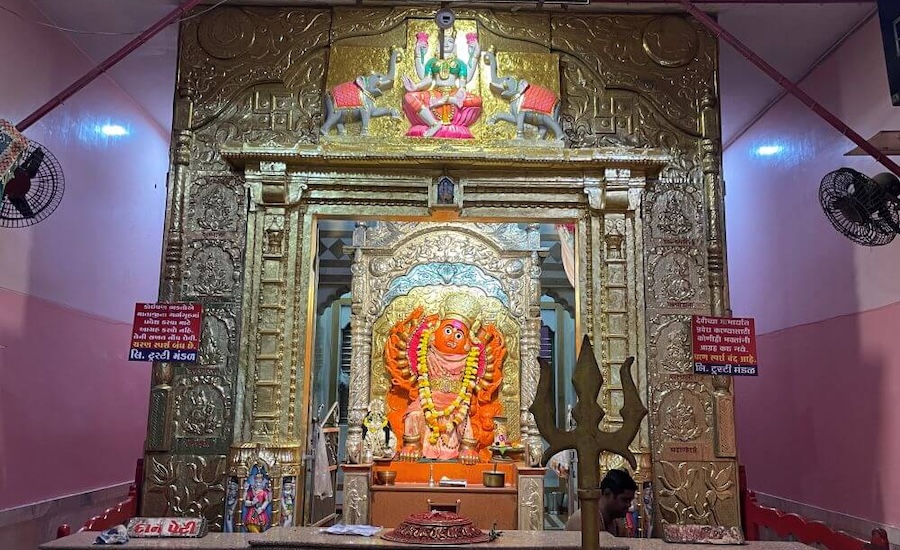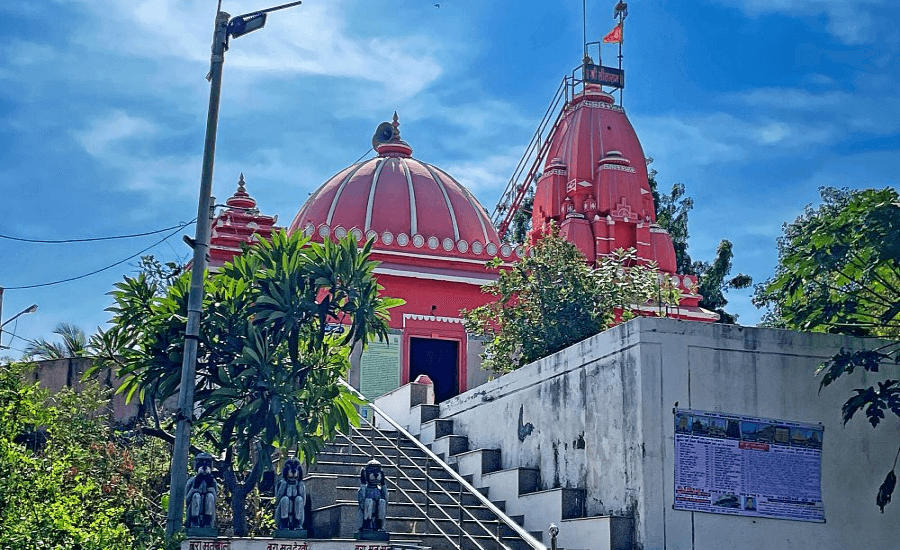
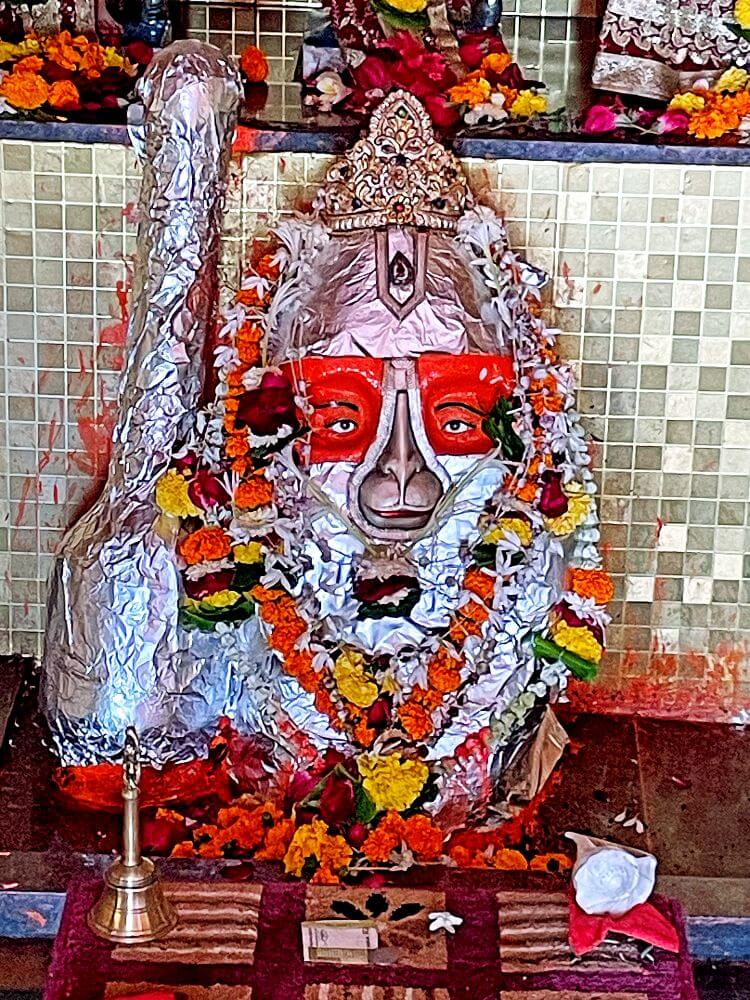 The Swayamprakat Mahavir Hanuman Temple in Kapasi village is a revered temple with mythological significance. It is said that Lord Hanuman sat on a hill in this village to safeguard Lord Ram’s yajna (sacrificial ritual) at Siddheshwar Temple in nearby Saras village. According to legend, the self-manifested ( swayambhu ) Hanuman resides here in the form of a stone idol, protecting devotees and alleviating their hardships. This faith draws thousands of worshippers who visit the temple to make vows.
The Swayamprakat Mahavir Hanuman Temple in Kapasi village is a revered temple with mythological significance. It is said that Lord Hanuman sat on a hill in this village to safeguard Lord Ram’s yajna (sacrificial ritual) at Siddheshwar Temple in nearby Saras village. According to legend, the self-manifested ( swayambhu ) Hanuman resides here in the form of a stone idol, protecting devotees and alleviating their hardships. This faith draws thousands of worshippers who visit the temple to make vows.
According to the mythological legend, after Lord Ram defeated Ravana, he sought to absolve himself of the Brahma Dosha (a sin incurred from killing a Brahmin) by performing a yajna at the Siddhanath Mahadev Temple in Saras, located about 2 km from Kapasi. Before the ritual, Ram met Sage Gokarna, who was meditating in the area, and expressed his desire to offer him a gift. Sage Gokarna, having renounced worldly desires, declined the offering but advised Ram to invite Brahmins from the banks of the Ganga in Kashi to officiate the yajna .
At that time, Hanuman was meditating on a hill in Kapasi village. Upon learning of Ram’s wish, Hanuman swiftly traveled to Kashi and invited the Brahmins. However, the Brahmins refused, stating they would not perform a yajna 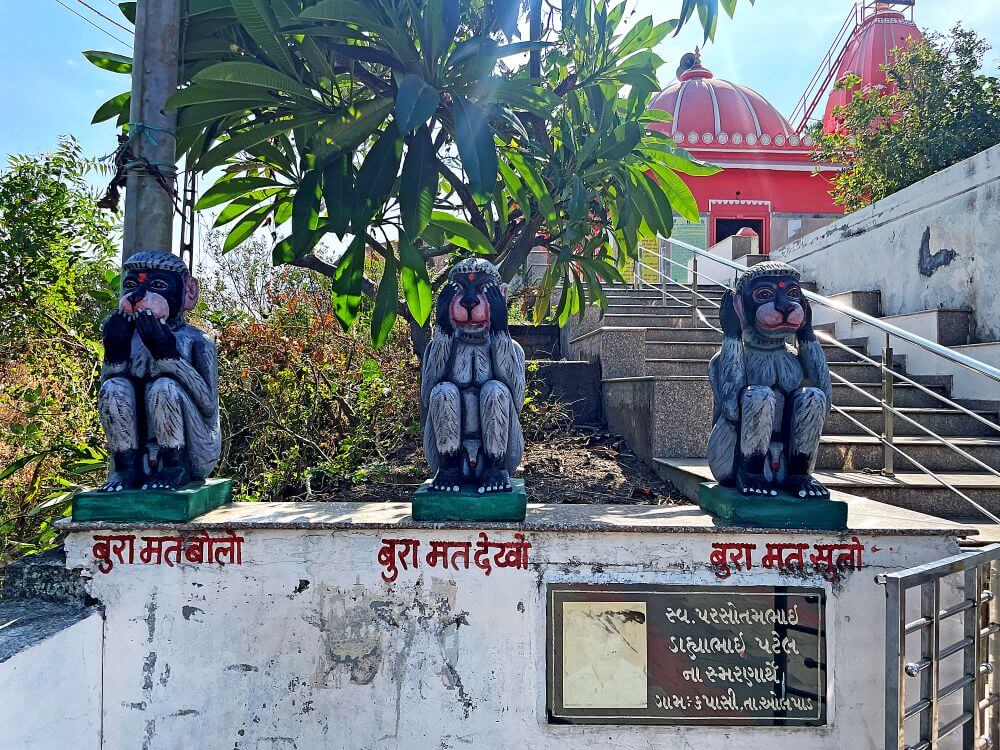 without first bathing in the sacred Ganga. Assuring them that they could bathe in the Ganga at Saras, Hanuman carried 18,000 Brahmins on his shoulders to Siddheshwar Mahadev Temple. To fulfil their condition, Lord Ram created the Ramkund by shooting an arrow into the ground, bringing forth the Ganga’s waters. Later, he created another water source called Bankund to provide sacred water for the ritual.
without first bathing in the sacred Ganga. Assuring them that they could bathe in the Ganga at Saras, Hanuman carried 18,000 Brahmins on his shoulders to Siddheshwar Mahadev Temple. To fulfil their condition, Lord Ram created the Ramkund by shooting an arrow into the ground, bringing forth the Ganga’s waters. Later, he created another water source called Bankund to provide sacred water for the ritual.
To protect the Brahmins and ensure the ritual proceeded undisturbed by demons, Hanuman returned to Kapasi and took his place on the hill. There, he became self-manifested in the form of a stone idol. This story is mentioned in the Tapi Khanda of the Skanda Purana and the 71st chapter of the Tapi Purana.
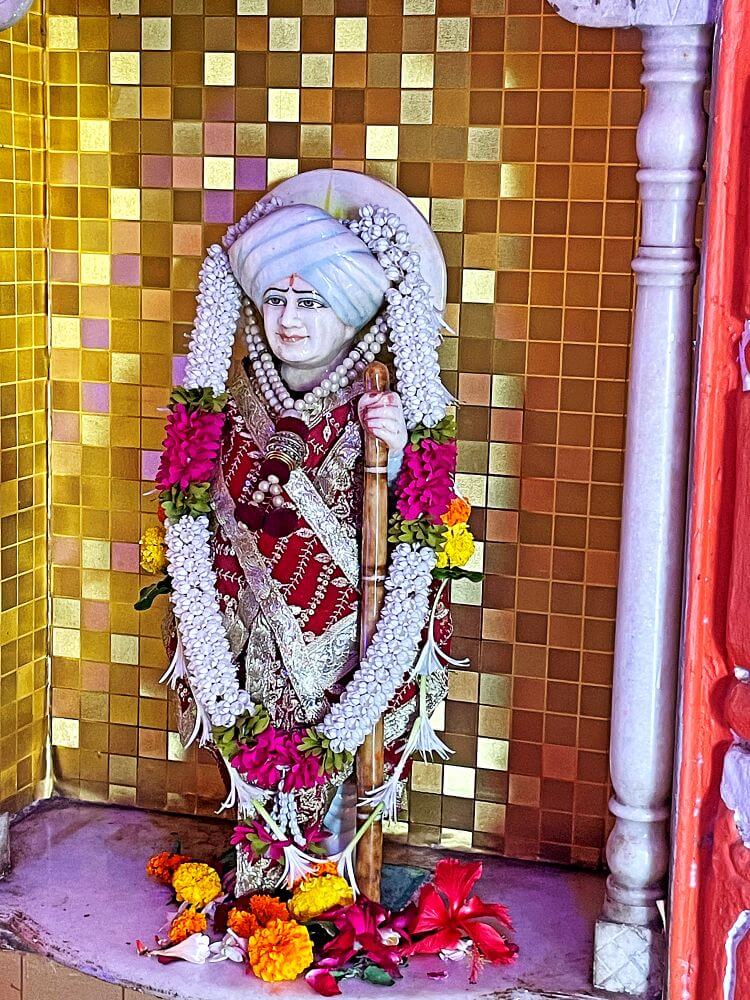 Kapasi village, situated 30 km from Surat, derives its name from ‘Kapisur,’ a name for Hanuman mentioned in the Hanuman Ashtak. The name Kapisur is referenced in the verse from the Hanuman Ashtak:
Kapasi village, situated 30 km from Surat, derives its name from ‘Kapisur,’ a name for Hanuman mentioned in the Hanuman Ashtak. The name Kapisur is referenced in the verse from the Hanuman Ashtak:
‘Lal deh lali lase, aru dhari lal langoor,
Vajra deh danav dalan, Jai Jai Jai Kapisur.’
This verse glorifies Hanuman, describing his red-hued body radiating brilliance, his red tail, his body as strong as a diamond, and his unparalleled prowess in defeating demons. It concludes by hailing him as Kapisur (Lord among Vanaras or monkeys). The temple, nestled on a peaceful hill, is accessible via a broad flight of 18 steps. At the base of the steps are sculptures of Gandhi’s ‘Three Wise Monkeys,’ symbolising ‘See no evil,’ ‘Hear no evil,’ and ‘Speak no evil.’
The temple complex features a serene courtyard with lush trees and benches for visitors. From the temple grounds, the shikhara (spire) of Siddhanath Mahadev Temple, located 2 km away, is visible.
The temple has a simple yet elegant structure with a bright orange colour. It comprises a mukhamandapa (front porch), sabhamandapa (assembly hall), and garbhagriha (sanctum). The front porch has a pagoda-shaped spire, while the assembly hall is topped with a dome. The main sanctum has 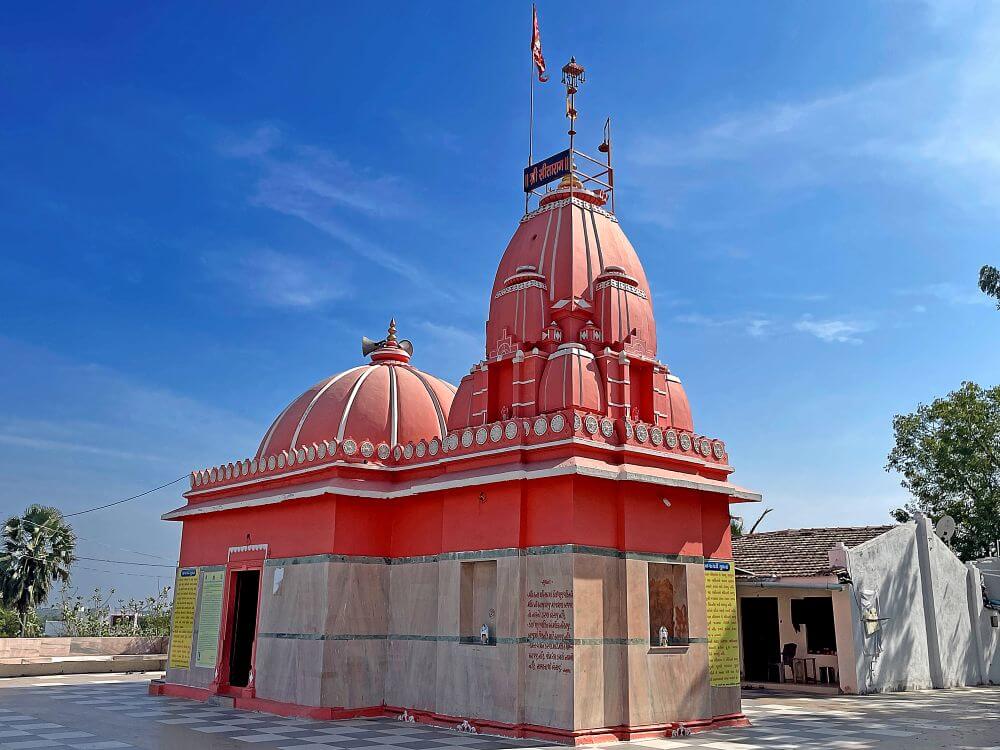 a tall shikhara with smaller spires ( urushringa ) adorning its sides.
a tall shikhara with smaller spires ( urushringa ) adorning its sides.
Four intricately carved circular columns support the front porch. Above the entrance to the assembly hall is a carved relief of Hanuman’s face. The hall is enclosed, with three doorways providing access. In the sanctum lies the self-manifested stone idol of Hanuman. Beside the idol rests a large mace ( gada ), both covered in silver plating. Behind the idol, marble statues of Ram, Lakshman, and Seeta adorn a raised pedestal. On the left side of the sanctum is a shrine dedicated to Lord Ganesh, and on the right is a shrine for Jalaram Bapa, a revered saint. The temple’s outer walls feature small niches housing idols of Gods like Indra, Yama, and Varuna.
The temple is open daily for darshan from 6 AM to 7 PM, with morning aarti at 6:30 AM and evening aarti scheduled for the convenience of local residents. Devotees visit the temple regularly, with larger crowds on Tuesdays and Saturdays. Many devotees make vows, known locally as badha lena (taking an oath), to fulfil their wishes.
Major festivals celebrated here include Ram Navami and Hanuman Jayanti which are celebrated with great devotion. The temple’s anniversary is observed on Hanuman Jayanti.
